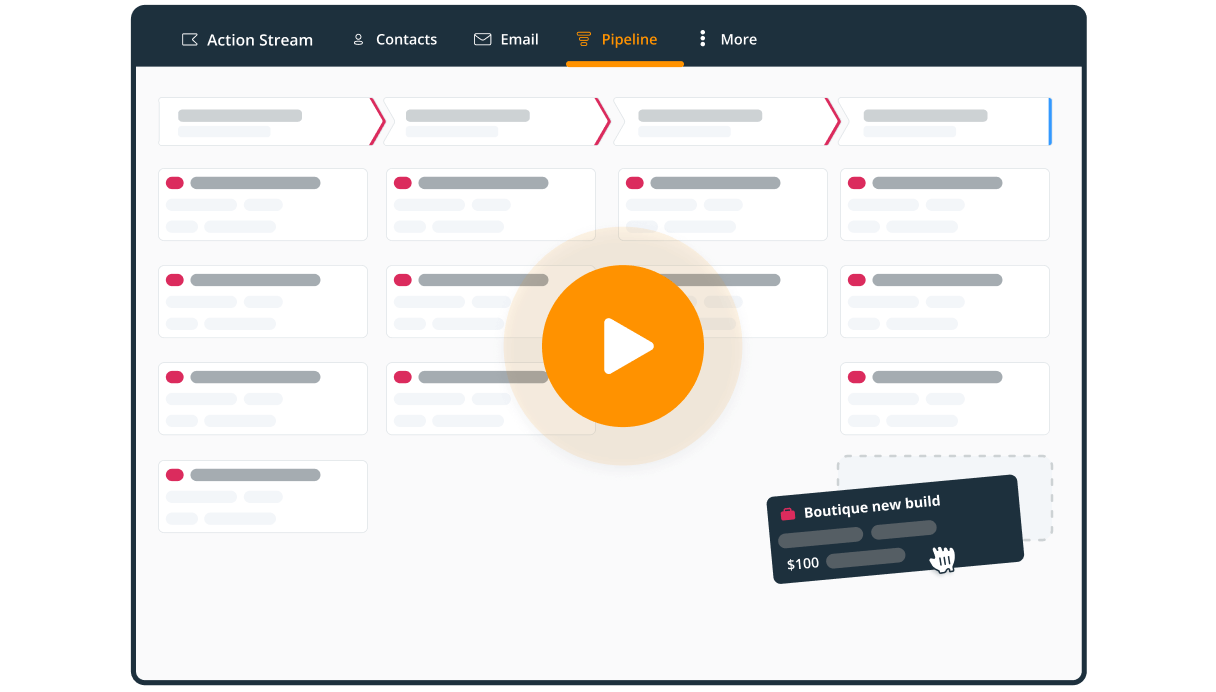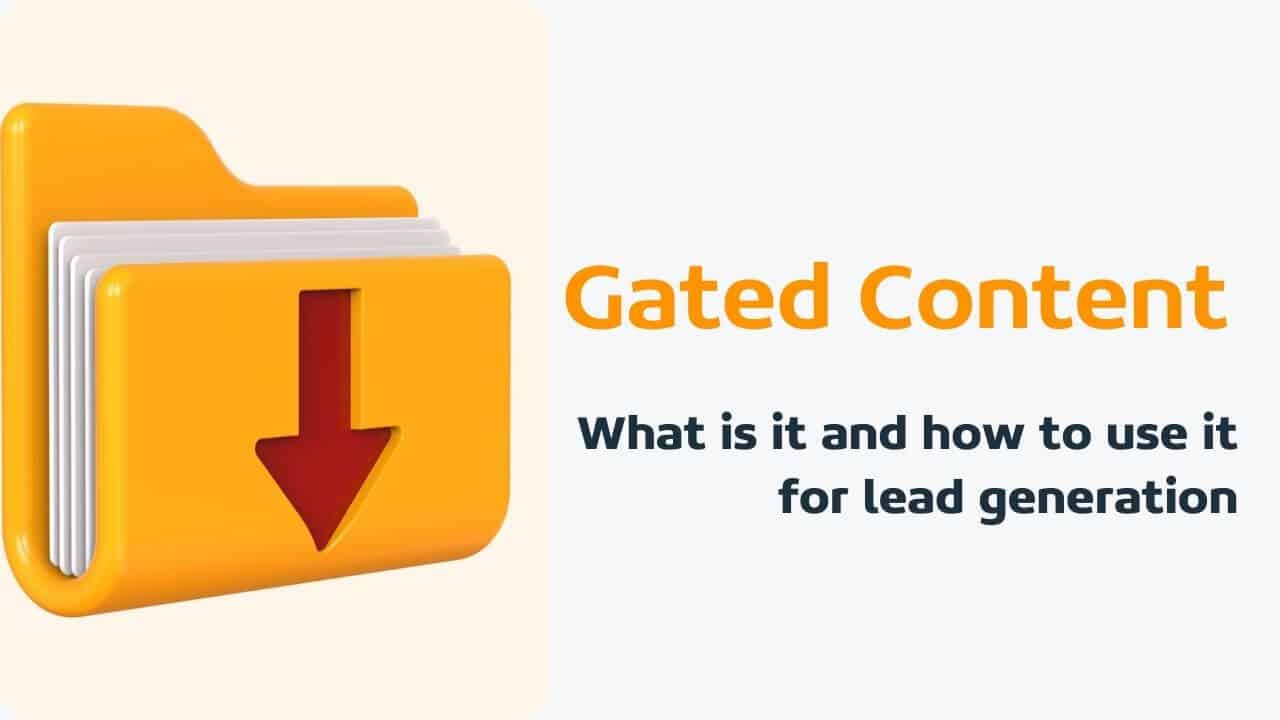
Gated Content: What is it and how to use it for lead generation?

Businesses gate their content for lead generation. Although making content harder to access might seem senseless, in the long run, this tactic can bring your business a new pool of paying customers.
People who sign up to download your asset will be more than just casual visitors. They can form part of your list of potential clients.
Read on to know what gated content is and how you can use it for lead generation.
What is gated content?
Gated content is the type of content your prospects access in exchange for their information, like their name, and email address, among others. This is information you can then use to send them emails to nurture relationships, and, ultimately, convert them into sales.
In practice, you place your valuable content behind a form. It should be free of charge and accessible to anyone.
Although gated content is extremely popular among businesses, this strategy has pros and cons.
Three benefits of gating content
- Improved lead generation
- Audience segmentation
- Insights on the customer journey
The cons of gating content
- Limited brand visibility
- No impact on SEO
Should I gate content?
So, if there are cons to gated content, should you gate content?
For best results, you should include gated and ungated content in your content marketing strategy.
How to create gated content in 4 steps for lead generation
Now that we’ve covered the basics, learn the steps to create gated content that can generate leads for your business.
1. Conduct a successful competitive analysis
Start by researching the pieces of content your successful competitors are creating. Look through their website and see the gated and ungated content they offer.
Let’s say you’re a company that offers accounting software.
Do a quick Google search of companies in your niche and sign up for their newsletters. Visit their website and see what they offer: do they have free e-books? webinars? or any other type of content that is used to capture lead contact details?
From there, you can create your content strategy. This means deciding what types of content will work best in your industry as gated and ungated and brainstorming ideas of what to offer to your audience.
Research may even inspire you to enhance other aspects of your content marketing strategy. For instance, you may decide to incorporate social SEO and influencer marketing.
2. Understand the buyer’s journey in the content marketing funnel
Before a prospect becomes your paying customer, they go through three buyer’s journey stages:
- Awareness
- Consideration
- Decision
Using gates for promotional content at the awareness stage of the buyer’s journey might put people off, as they most likely know little about your business and don’t trust you yet. However, it’s common to place educational content, such as e-books and webinars, behind a gate at this first stage.
If you do decide to use gated content at the awareness stage, make sure what you offer is valuable enough for people to want your content.
For example, have a look at the website below. This Australian company has a webinar on cybersecurity that doesn’t aim to sell. It’s there to educate:

In the consideration stage, potential customers think about purchasing your product. This is where you build trust with your consumers. The content should show prospects why they should choose your brand.
So, gated case studies, whitepapers, or comparison charts would work great for the consideration stage. Here’s an example from TADA:
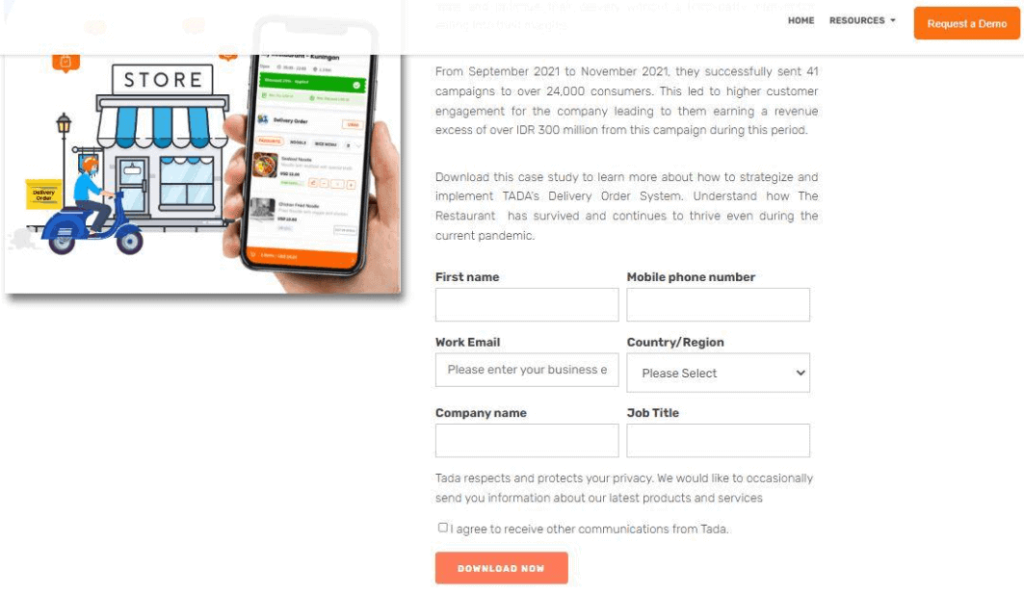
At the bottom of the funnel, in the decision stage, you should give clients a reason to buy. A free trial or a product demo can easily influence a purchase while giving you precious contact information. TallyPrime, for instance, gated their free product demo:
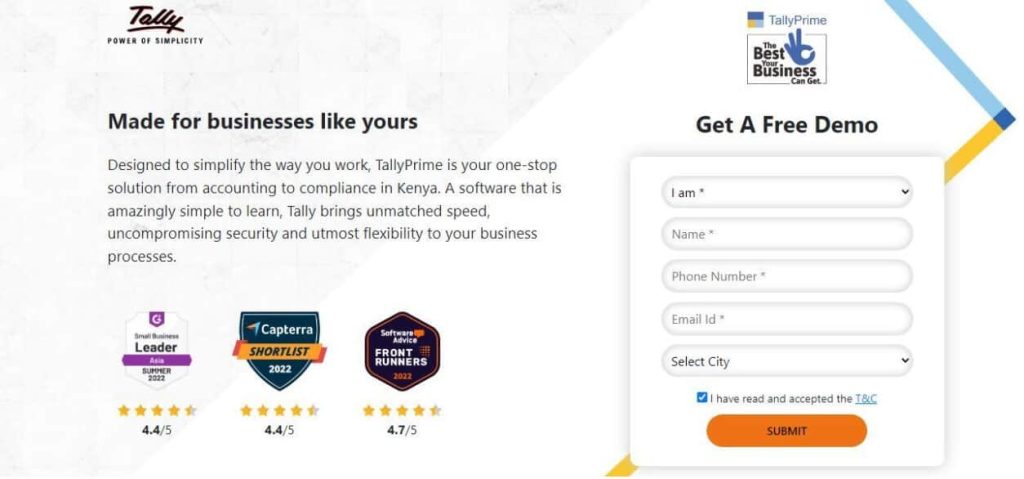
It’s critical to provide relevant high-value content at each stage of the marketing funnel to boost conversions. Make sure you create a customer journey map, too, to determine how the content should fit in your buyer’s journey.
3. Create an effective landing page
Creating an effective landing page with a form is a very common gated content practice. A landing page is a standalone web page, created to collect a visitor’s contact information in exchange for a resource.
Below is a BrightGauge example. The company offers free white papers and guides focused on effective team working, which fit perfectly with the products they sell.
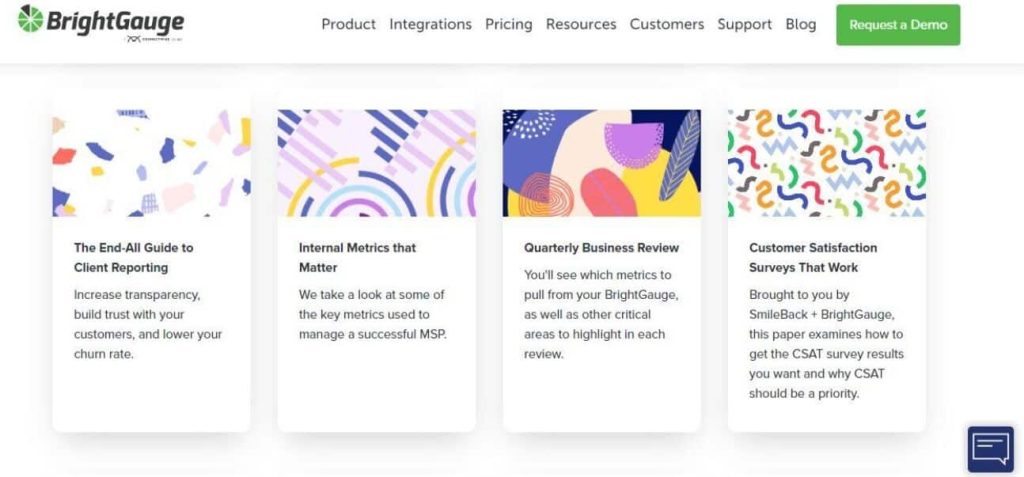
Once you click on your chosen white papers from the page above, a dedicated landing page appears:
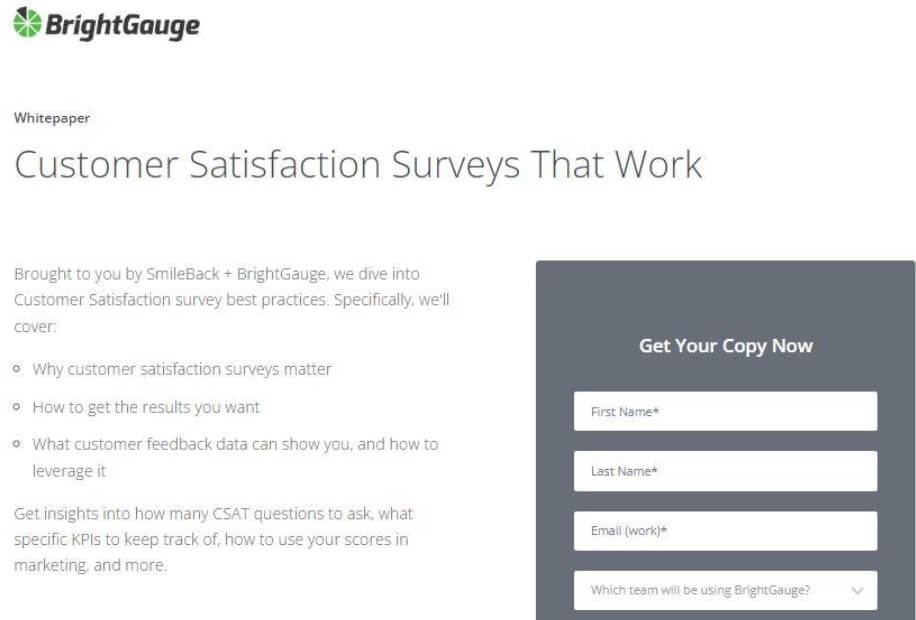
An effective landing page requires a great headline and power words in the copy. Using AI tools, like Writer, ChatGPT, or any other similar tool, can help with catchy content generation.
A simplified visual layout will eliminate distractions and capture your visitor’s undivided attention. A persuasive call-to-action (CTA) button will help guide users toward your goal conversion, which is for them to submit their information.
4. Offer incentives
Offering incentives to your audience is key to lead generation. Go back to your content marketing funnel and customer journey map to determine the best incentives to give.
We already looked at some incentives in the previous section—white papers, ebooks, webinars, comparison charts, and demos.
Here are other incentives you might want to consider:
- Templates
- Courses
- Quiz results
Consider your audience’s interests when picking the content topics too.
How to nurture leads after creating gated content
Now that you’ve started collecting people’s contact details, you need a strategy for what to do with the data.
Here’s a guide on how to nurture your leads.
1. Segment your audience
You should segment the information you have about your potential clients. This way, you’ll be able to send personalized nurturing emails to move your leads to the next buyer’s journey phase. Segmented email campaigns produce 50% more click-throughs than non-targeted email campaigns.
When designing a gate behind your content consider what additional information you should ask for, apart from the name and email address. This could take the form of a drop-down list of job titles, objectives, company sizes, etc.
Segmentation makes dividing your email list into smaller groups easy.
2. Develop targeted email marketing campaigns
Targeted email marketing campaigns are specific messages created for specific audience members. Whether it’s an email marketing campaign for SaaS, eCommerce, or any other business, you must personalize your emails for the best results.
Every new lead expects to be treated like an individual. Send the right and tailored message at the right time to ensure it resonates with the recipients and triggers an engagement.
Here’s an example of a nurturing lead campaign email. The company offers every new lead a 10% discount on their first order.
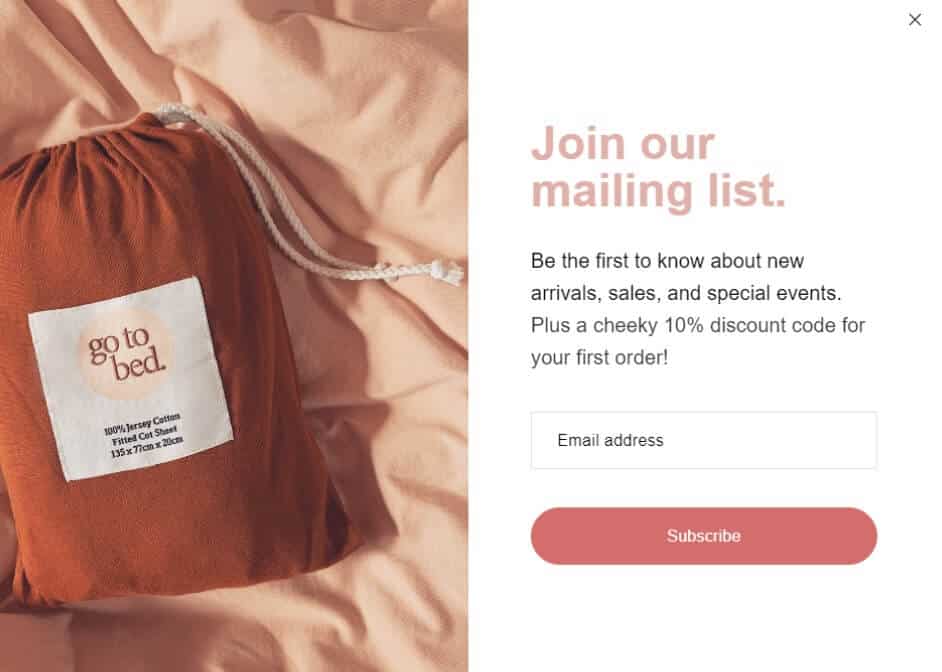
To nurture your target audience, you can offer educational content, behind-the-scenes content, social proof, and more.
3. Enable automation
Using automation in your lead nurturing campaigns will make the job of your content marketers easier, faster, and more accurate.
With Web Forms that are integrated with your CRM, for instance, once a lead fills out your form, they’re automatically added to your CRM with a specific tag. If you’re using Mailchimp or Omnisend for your lead nurturing and newsletter communication, you can create newsletters that are sent automatically in a predefined order, based on the information you gathered about your clients.
So, for example, if you collected a birthday date, email marketing tools can send automated birthday emails, like the one below:
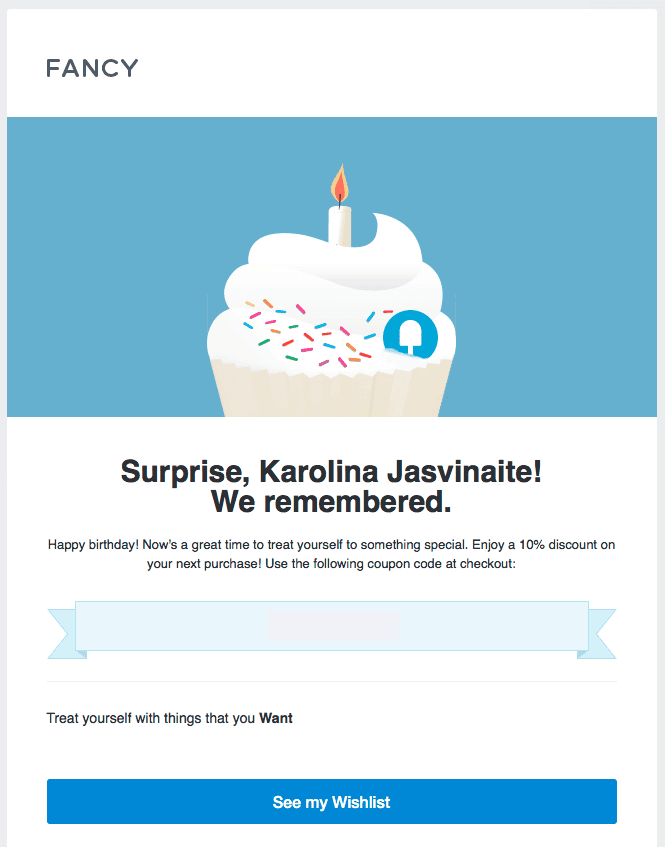
4. Measure effectiveness of your gated content
You should track conversions and measure your analytics to learn if your gated content is successful.
For this purpose, you can use data from Google Analytics, your CRM, and other marketing automation tools. Reports will show how many leads you’re getting from your gated content.
Track the number of email signups that are generated by the gated content. Analyze the percentage of revenue that is a result of your gated content, too.
Keeping track of the effectiveness of your nurturing campaigns helps you know your audience better and improves your content strategy. Analyzing the data will help you understand how successful the campaign was.
5. Experiment
Don’t be afraid to experiment. If, for example, an e-book is not working for your audience, try changing its design. There’s no harm in experimenting with different approaches.
You can use incentives such as contests, too. Contests allow you to engage with your audience and increase traffic to your website and generate leads.
Look into changing the way you promote your gated content. Promotion of content is critical to make the value more visible to the audience.
Use the gated content strategy to generate leads
Businesses can use online gated content as one of the effective strategies to generate leads. When done right, gated content offers value and builds thought leadership.
A strong gated content strategy to generate leads will help your business grow. To earn that exchange, follow the tips for creating gated content listed in this post.
Once you publish your asset and start growing your mailing list, nurture your leads using our step-by-step guide above.

About blog post author
James Westfield is the Marketing Manager for Writer, an AI writing platform designed for teams. He has over 10 years of experience in the industry. When James isn’t in the office, you can find him on the golf course.

